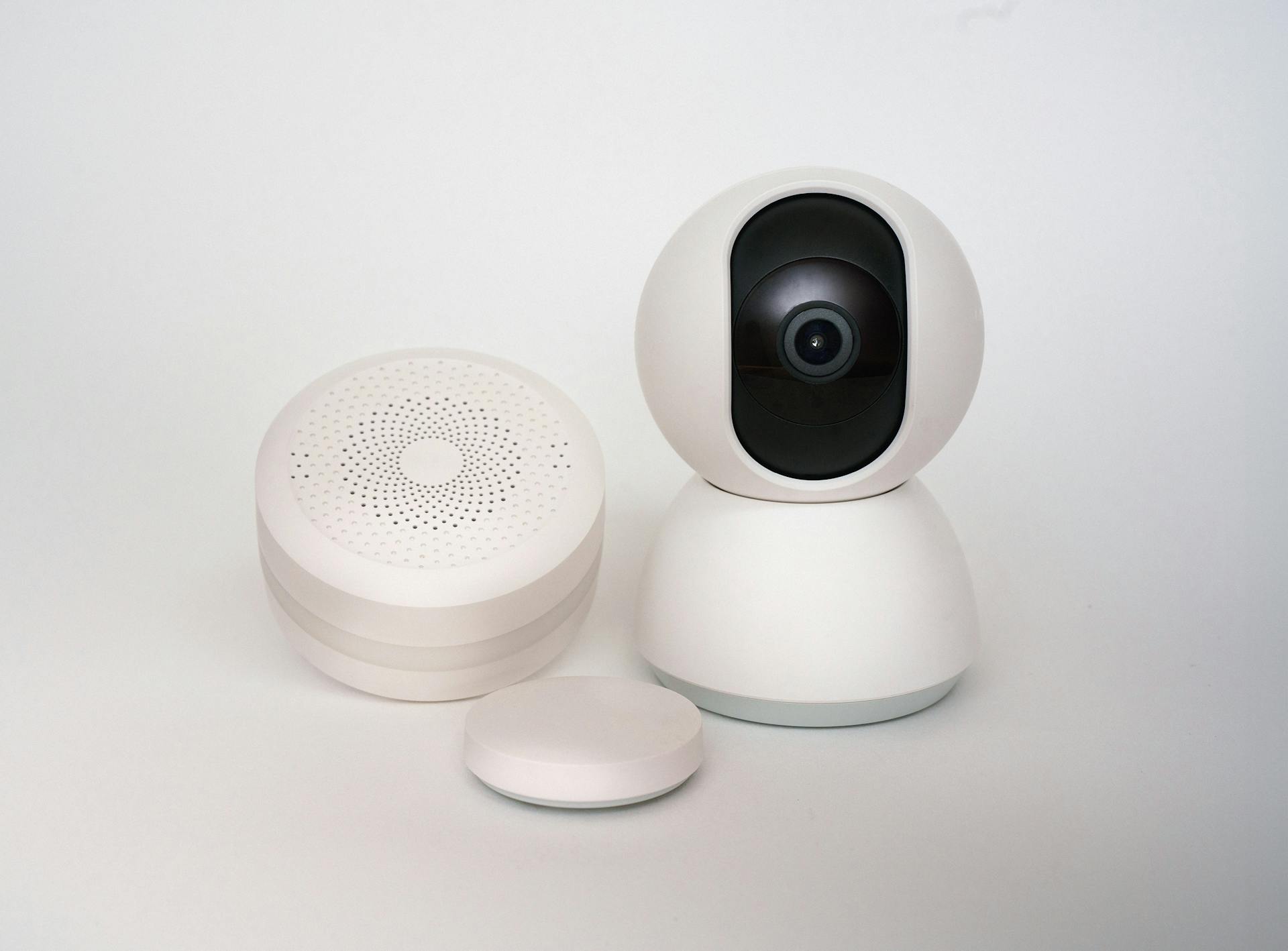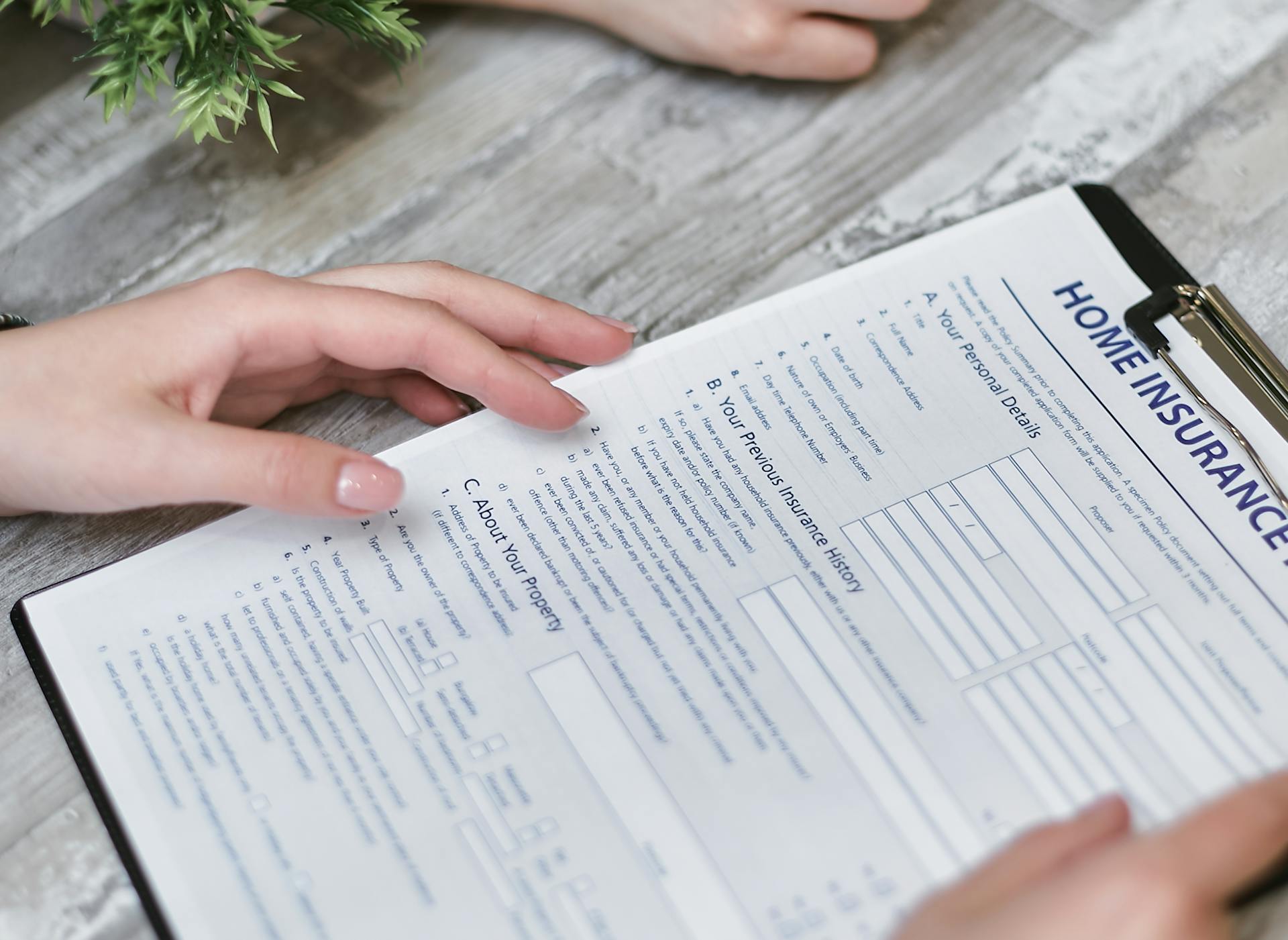
Home insurance can provide financial protection against burglary, but it's essential to understand what types of theft are covered. Most home insurance policies cover theft of personal property, including valuables like jewelry, electronics, and cash.
Typically, home insurance policies cover theft that occurs through forced entry or exit, such as breaking a window or door. However, if you leave a door or window unlocked, the insurance company may not cover the loss.
Homeowners should review their policy to see if it includes a deductible for theft claims, which can range from $500 to $2,000. This means you'll need to pay a portion of the claim before the insurance company pays out.
Take a look at this: Does Homeowners Insurance Cover Leaking Windows
Coverage
Coverage is a crucial aspect of homeowners insurance, and understanding what's covered is essential in protecting your valuables. Personal property coverage, or coverage C, is designed to repair or replace damaged personal belongings in your home.
This coverage extends to a wide range of items, including furniture, electronics, clothing, jewelry, appliances, and books and collectibles. If a pipe bursts in your home, causing extensive water damage that affects your electronics, furniture, and clothing, personal property coverage would cover the costs of repairing or replacing these damaged items.
You might enjoy: Does My Homeowners Insurance Cover My Injury
Standard homeowners insurance policies will cover your personal belongings if they are stolen inside or outside your home. However, the type of coverage you have will determine whether you're reimbursed for the Actual Cash Value (ACV) or Replacement Cost Value (RCV) of the stolen item.
If you have a high-value item, such as a musical instrument, jewelry, electronics, or cash, there may be a limit on how much you can be reimbursed if it's stolen. It's essential to review your policy to understand these limitations.
Here's a breakdown of some common items and their coverage:
- Furniture: Covered
- Electronics: Covered
- Clothing: Covered
- Jewelry: May have a limit
- Appliances: Covered
- Books and Collectibles: Covered
- Cash: May have a limit
Keep in mind that if your car is stolen, your homeowners policy will not cover that cost. You need comprehensive insurance through an auto policy to be covered for car theft.
Expand your knowledge: Does Health Insurance Cover Plan B
What Types of Theft Are Covered?
Standard homeowners insurance policies will cover your personal belongings if they are stolen inside or outside your home. Whether you're pick-pocketed in the street or someone comes into your garage and takes your bike, you're covered.

You'll be reimbursed for the actual cash value (ACV) or replacement cost value (RCV) of your stolen items, depending on your policy. ACV reimburses you for the current value of your item, while RCV reimburses the cost to replace it in the current market.
Some high-value items, like musical instruments, electronics, and cash, have limits on how much you'll be reimbursed if they're stolen. These limits vary depending on your policy.
Your homeowners policy will cover almost everything that can be stolen, but there are a few exceptions, such as cash and jewelry, which have limited reimbursement amounts.
Check this out: How Much Is Vacant Home Insurance
Storage Theft
Storage theft is a serious concern for homeowners who store valuable items in off-site storage units. If your storage unit is broken into and completely liquidated, there will be a cap on just how much benefit is available to you.
Most policies have a sub-limit on personal property that is off-premises, which means you won't be covered for the full amount of your stolen items. The standard sub-limit amount is 10% of your total personal property coverage on your home.
On a similar theme: Does Homeowners Insurance Cover Rental Property

To avoid this limitation, you can beef up your policy, but this will likely increase your premiums. It's essential to factor in this sub-limit when storing valuable items in a separate off-site storage unit.
Creating a home inventory can help you determine the correct personal property coverage limits. This includes walking around your home and writing down all your items, along with a rough estimate of the cost to replace them.
When Does Home Insurance Cover Burglary?
Home insurance typically covers theft from your home, including break-ins and burglaries. This coverage is usually included in the personal property protection portion of your policy.
You're covered for theft whether it happens inside or outside your home, including if you're pick-pocketed in the street or someone breaks into your garage.
The type of coverage you have, either Actual Cash Value (ACV) or Replacement Cost Value (RCV), depends on your policy. ACV reimburses you for the item's current worth, while RCV covers the cost to replace it.
For another approach, see: Life Insurance That Covers an Insured's Whole Life
If a burglar breaks your window or damages your door, your dwelling coverage can help pay for the repairs. This coverage is designed to replace your home if it's damaged or destroyed.
Your personal property limits are initially set as a percentage of your dwelling coverage, which determines how much your insurance provider can reimburse you for theft.
Here's an interesting read: What Does Rental Dwelling Insurance Cover
Who Is Covered
If you're wondering who's covered under your home insurance policy, the answer is anyone you list on the policy. This can include a spouse, child, or anyone else you identify.
People living in different residences are also covered, so if your child is away at college, their personal possessions are protected against theft from their dorm room. You'll need to discuss specifics with your agent, but generally, once your child moves into their own home, they'll no longer be covered.
Intriguing read: Why Is Anucort-hc Not Covered by Insurance?
Stolen Cash
A homeowners policy can reimburse you for missing money, but only up to a certain dollar limit.
This limit is usually around $200, so if you have a large amount of cash at home, you should check your policy to see if it's enough to cover your losses.
If your policy's limit is too low, you may want to consider increasing it to avoid being underinsured.
Personal Property
Personal property coverage is a vital part of your homeowners insurance policy. It protects your belongings in case they're damaged or stolen.
Standard homeowners insurance policies cover your personal belongings if they're stolen inside or outside your home. This includes items like furniture, electronics, clothing, and more.
If you're pick-pocketed in the street or someone breaks into your garage and takes your bike, your policy will cover you. However, the amount you're reimbursed depends on whether you have Actual Cash Value (ACV) or Replacement Cost Value (RCV) coverage.
ACV reimburses you for the current value of your item, while RCV covers the cost of replacing it in the current market. It's essential to know which type of coverage you have.
People listed under your policy, such as a spouse, child, or other identified individuals, are also covered against theft. This extends to those living in different residences, including your child's dorm room if they're away at college.
A different take: Does Insurance Cover Personal Trainers
However, if your child moves into their own home, they'll no longer be protected by your policy. You'll need to discuss specifics with an agent.
If you have high-value items like musical instruments, jewelry, electronics, or cash, you may have a limit on how much you can be reimbursed. For example, lost or damaged jewelry is often limited to a certain dollar amount.
To ensure you're adequately covered, it's a good practice to check the value of your gadgets and jewelry. If your coverage amount isn't enough, consider adding a personal floater policy to cover rare or unusually high-value property.
Here's a breakdown of common personal property items and their coverage:
- Furniture
- Electronics
- Clothing
- Jewelry
- Appliances
- Books and Collectibles
- Musical instruments
- Musical equipment
- Cash (up to a certain dollar limit)
Remember to create a home inventory to set the correct personal property coverage limits. This will help you determine the value of your belongings and ensure you're adequately covered in case of theft or damage.
Frequently Asked Questions
Will a theft claim raise my home insurance?
Yes, a theft claim can increase your home insurance premiums, as it indicates a higher risk of future incidents. Insurance companies may adjust your premiums to offset potential losses.
Sources
- https://www.moneygeek.com/insurance/homeowners/does-homeowners-insurance-cover-theft/
- https://www.valuepenguin.com/does-homeowners-insurance-cover-theft
- https://www.gg-insurance.com/does-homeowners-insurance-cover-theft/
- https://www.insurancefortexans.com/blog/does-my-home-insurance-cover-theft
- https://www.nationwide.com/lc/resources/home/articles/does-homeowners-insurance-cover-theft
Featured Images: pexels.com


